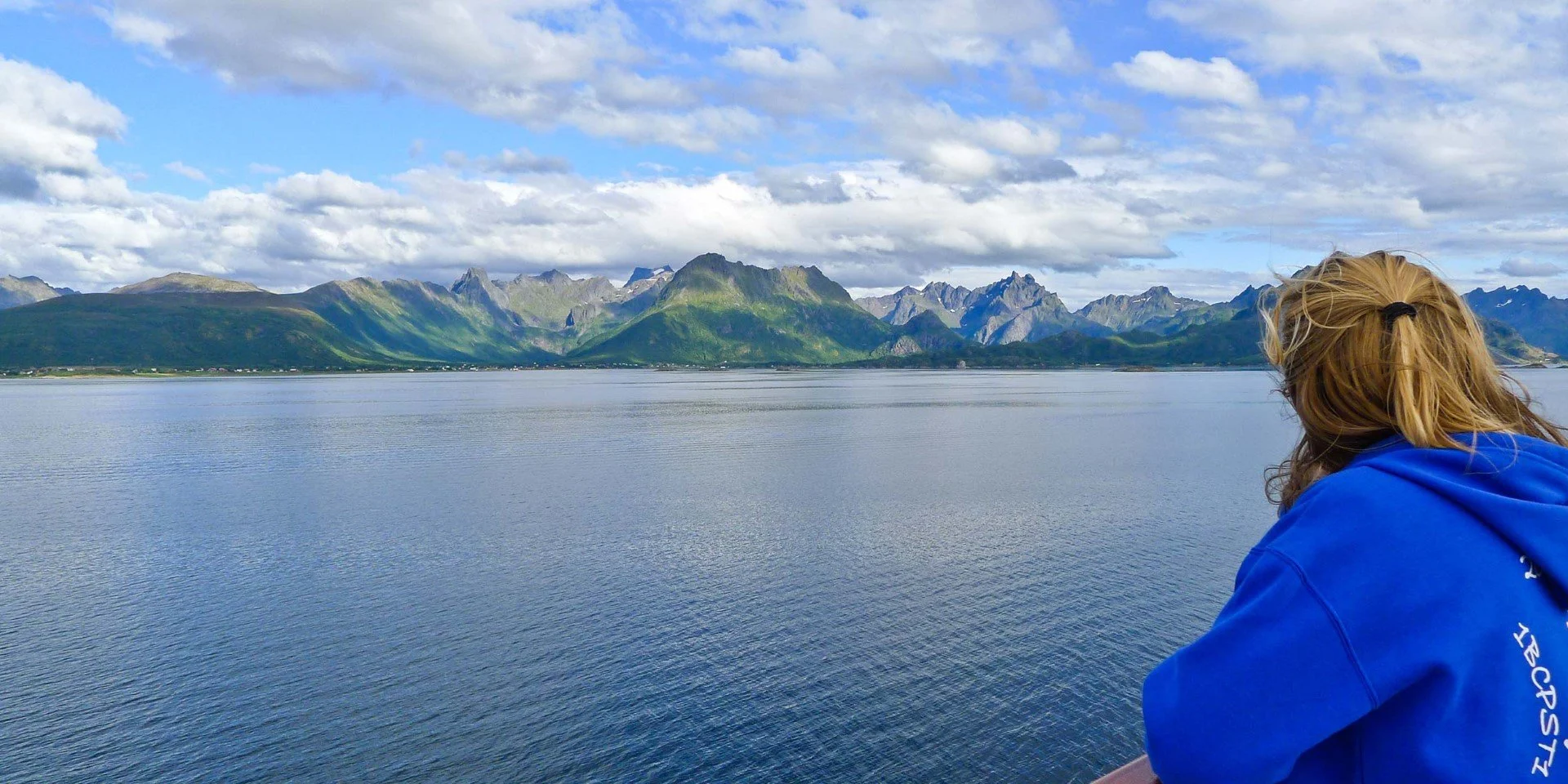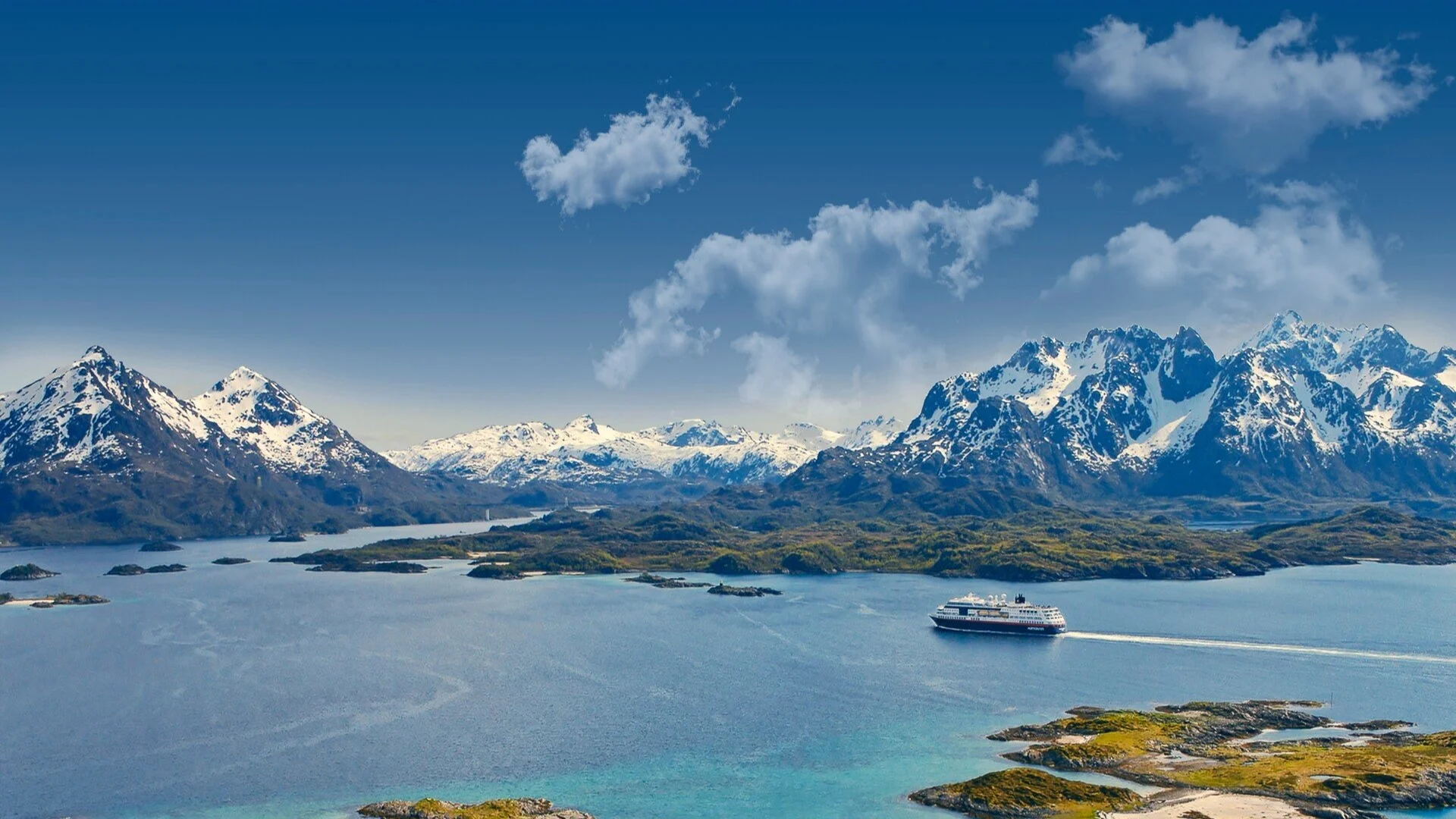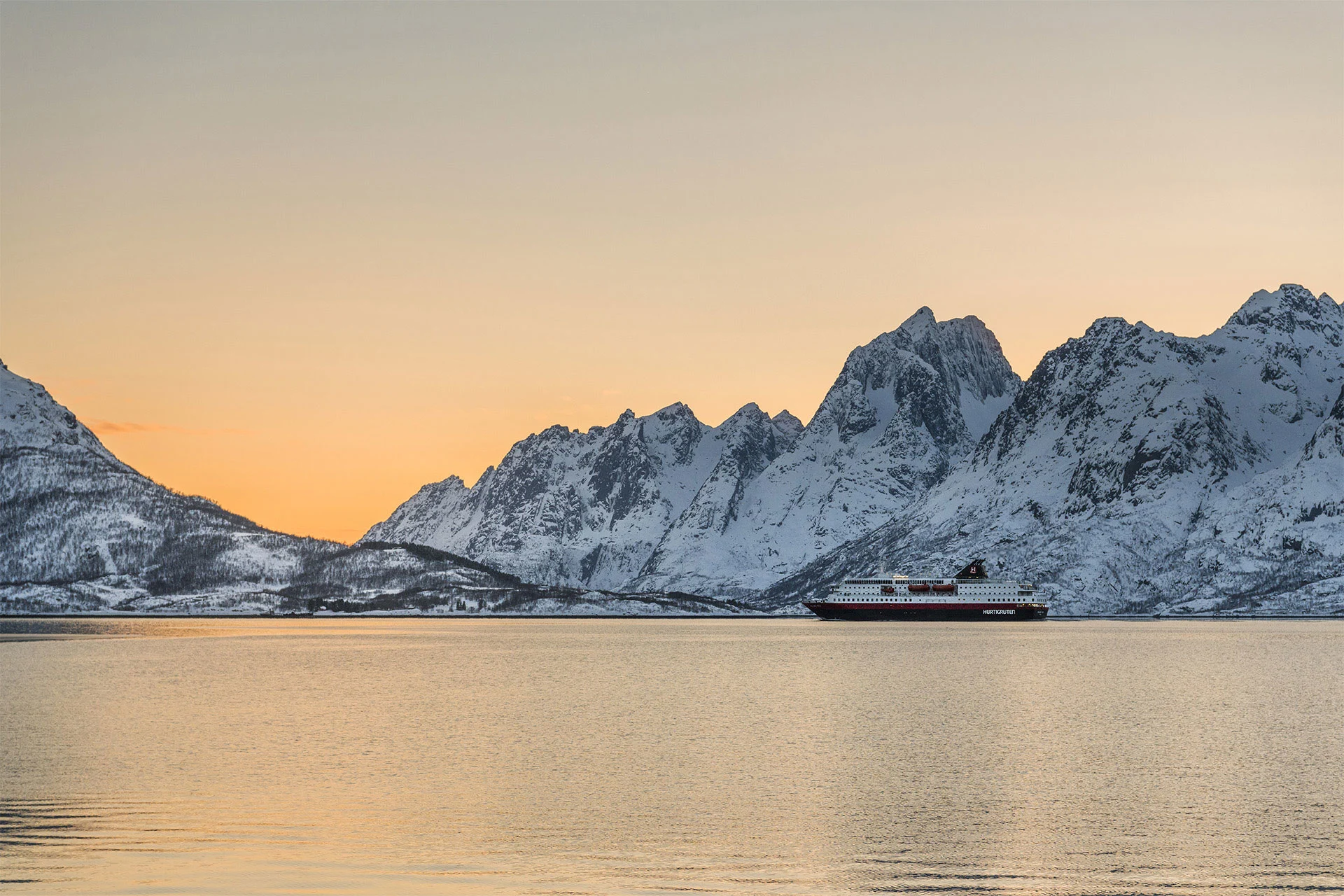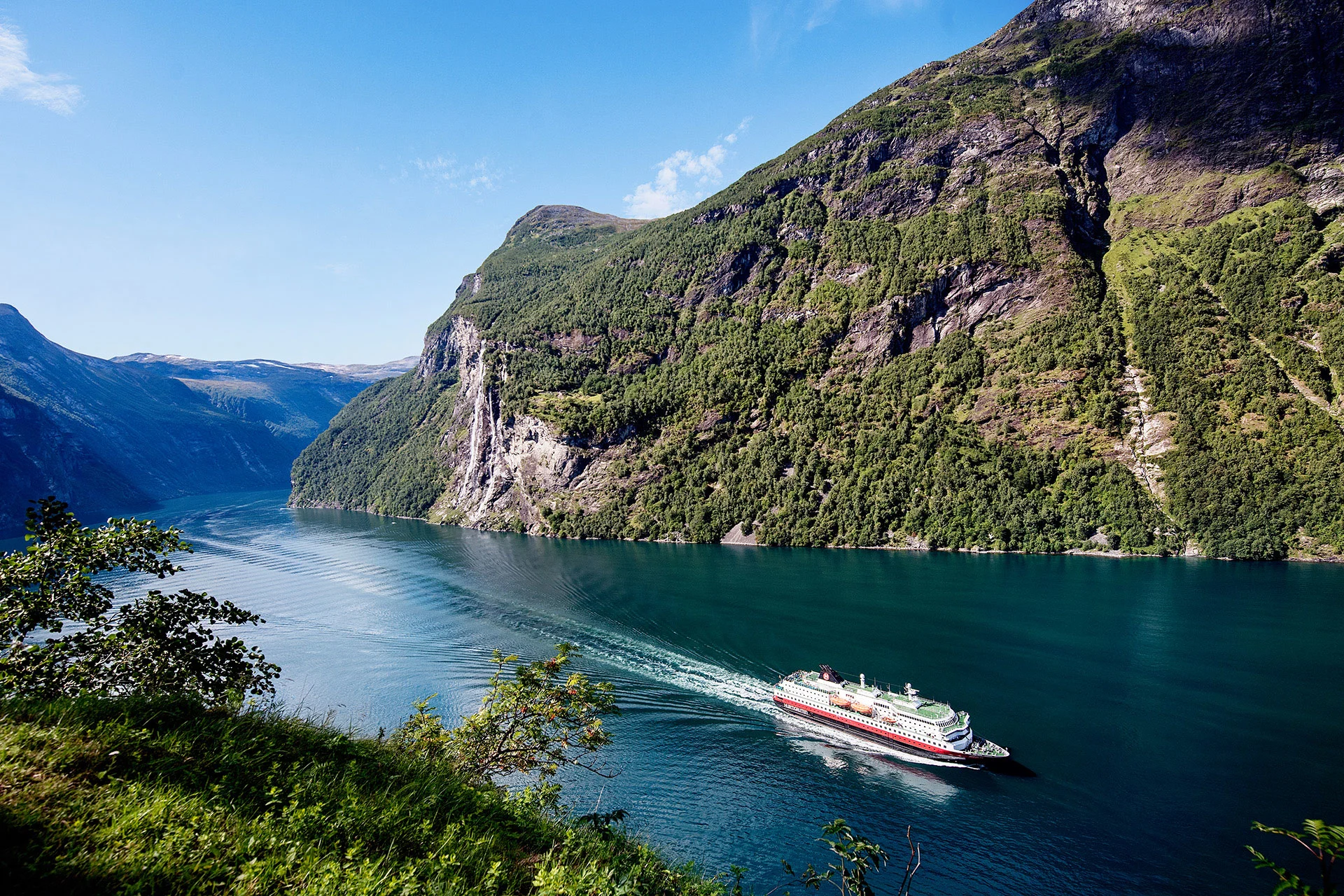
Lofotveggen and Vestfjorden
All voyagers sailing west past Vestfjorden eventually reach "The Wall”.
Out at sea, a massive wall rises steeply from the waters of Vestfjorden in northern Norway. Lofotveggen, the Lofoten Wall, is a collection of mountain peaks that from a distance, appear to form a straight line.
Lofotveggen consists of granite and volcanic rock formations that rose from the sea after the last ice age. Among its best-known peaks are Vågakallen on Austvågøy, which according to the Nordland Legend, chased the Seven Sisters and Lekamøja down the coast.
Vestfjorden itself is actually not a fjord at all. It is an enclosed area of the North Sea, extending from Værøy in the west for 155 kilometres to Barøy lighthouse at the entrance to Ofotfjord. The area has always been difficult for seafarers to navigate. It was once so feared that boats headed for Lofotveggen would wait together nearby for long periods, until the weather was good enough to sail out towards "the wall".
Seabed variations in Vestfjorden limit the exchange of water between the fjord and the open sea. These conditions produce water temperatures that make the fjord a favoured spawning ground for cod during the period between January and April. Thousands of fishermen make their way here every year for the annual Lofoten fishery. The cod harvested during this period is a delicacy that graces dining tables around the world.
Hurtigruten crosses Vestfjorden between the ports of Bodø and Stamsund.


